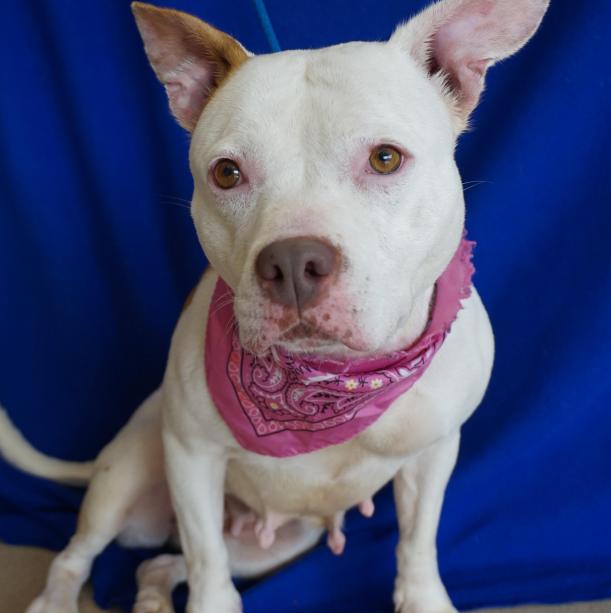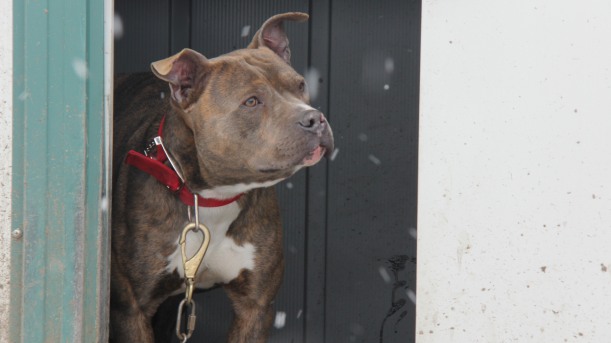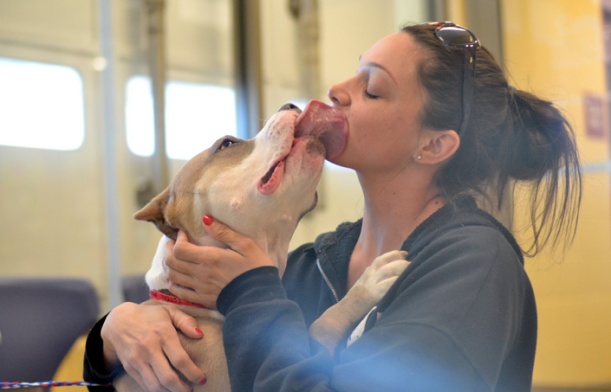As Hurricane Harvey battered Southeast Texas, the Houston SPCA began reaching out to animal welfare organizations throughout the United States to the thousands of animals impacted by the deadly storm. On Monday, Sept. 4, the Michigan Humane Society answered the beleaguered agency’s call with a team of nine trained and experienced animal welfare professionals, including a veterinarian, rescuers, first responders, and skilled shelter technicians, and a small fleet of vehicles equipped with significant transport capabilities.
Matt Pepper, MHS President and CEO, is among the team. Equal parts animal advocate and passionate writer, Matt is sharing his experiences by way of regular journal entries. Here are his first three.
Sept. 10, 2017: Day 5: Heavy lifting
There are still more than 700 animals (dogs, cats and livestock) at the Houston SPCA and some 250 more spread between two local boarding facilities. There are dogs and cats in every nook and corner in this building, plus an incredibly adorable miniature pig. Resources and staff are stretched to the limit, but today had a hint of normalcy to it.
I sat in the incident command meeting in the morning, and there was an overarching theme: let’s get a plan to start winding down. It was clear these people, who have given all they have, were ready to start thinking about returning to business as usual. I have to wonder whether an event like this can ever leave anyone the same person they were, or if anything can ever really be like it was. That doesn’t have to be a bad thing. Adversity and tragedy can make us better people.
The command team began putting processes and timelines in place to shut down some external emergency facilities. The mere mention of this put a much-needed, and well-earned, smile on the face of most in the room. It was the first hint of that light at the end of the tunnel.
It was truly inspiring to hear Patti Mercer, CEO of the Houston SPCA, speak about the animals and colleagues of Florida in the aftermath of this catastrophic event. With the certain devastation of Hurricane Irma to follow Harvey, her thoughts, and those of her team, were about others.
While not as exciting as the hoarding case yesterday, today was about filling a true need and helping build a strong foundation for recovery. Our MHS team stepped up and filled in gaps in supporting Houston SPCA teams on animal care, cleaning, and the daily needs of the facility and its animals. If it needed to be done – we did it. The team was dirty, sweaty, tired and sore. Today was the last day in Houston for the Animal Humane Society, the Connecticut Humane Society and the Atlanta Humane Society. Tomorrow MHS and the SPCALA will be the only external support from other animal welfare organizations. There remains the likelihood that teams from two or three other organizations will relieve us when we leave and continue to support the recovery efforts.
The need is still overwhelming. The medical team, supported by MHS, started treatment protocols on animals in need of care at the start of the day and didn’t finish until just before 5 p.m. The care and treatment of these animals, which have undergone such a horrific ordeal and are clearly scared and confused, seems endless.
Emergency intakes have begun to decrease, and now the task ahead of us is to work with the Houston SPCA team to maximize the opportunities to reunite each animal with its owner and to give those that are not, or cannot be, the best chance at a new beginning.
It is clear that our team is developing a friendship and a comradery with the team at the Houston SPCA. At the end of the day conversations revolve around the sweat, dirt, and spending time alongside one another. We talk about what’s next for them as if it is next for us. We are invested in their success.
What I am most proud of is that while this event is truly catastrophic, and has put a spotlight on our efforts in Houston, what we are doing here is no different than the compassion and care we give to every animal back home. Every animal in need is an emergency that requires everything we have. We give our heart and soul, and a piece of us lives in every animal entrusted to us. I am incredibly proud to represent the Michigan Humane Society and to stand alongside, and get more than a little dirty with, our team.
Sept. 11, 2017: Day 6: The tide recedes
Today felt like the first step in scaling back from Harvey.
When Harvey made landfall, the influx of animals into the Houston SPCA was overwhelming. Two boarding facilities opened their doors to the overflow of animals; 246 of them between the two facilities. Our field team, consisting of Dave McLeod, Debby MacDonald and Myron Golden, spent the day ferrying animals from the boarding facility back into the fold at the Houston SPCA. The boarding facilities were a true emergency contingency, and it was clearly a step in the right direction to start to draw down those populations. The team’s final trip resulted in 47 dogs coming back to the Houston SPCA. It was incredible to see the efficiency of teams from Houston, SPCALA and the Michigan Humane Society as they unloaded, triaged and found a place for these dogs. It is backbreaking, tiring work, and it was hot today, but at the end of the day significant progress had been made toward scaling back from Harvey.
The team’s final trip resulted in 47 dogs coming back to the Houston SPCA. It was incredible to see the efficiency of teams from Houston, SPCALA and the Michigan Humane Society as they unloaded, triaged and found a place for these dogs. It is backbreaking, tiring work, and it was hot today, but at the end of the day significant progress had been made toward scaling back from Harvey. Erica Sikora and Laura Peterson were tasked with continuing the treatment for the more than 450 animals at the Houston SPCA that needed advanced medical care. Dr. Fisher was put to work in surgery and was presented with no shortage of challenges.
Erica Sikora and Laura Peterson were tasked with continuing the treatment for the more than 450 animals at the Houston SPCA that needed advanced medical care. Dr. Fisher was put to work in surgery and was presented with no shortage of challenges.
He performed an amputation, removed an eye, repaired a broken jaw and even helped remove part of a dog’s severely damaged ear. At one point, the technicians at the Houston SPCA said they couldn’t keep up with him. Dr. Fisher is an incredibly talented veterinarian, and we are lucky to have him with the Michigan Humane Society and with us on this trip. Anna Chrisman and Larry Wilhelm returned to transporting animals to the veterinary clinics that have volunteered to foster displaced animals. Today they made stops at three clinics in the Dallas area.
Anna Chrisman and Larry Wilhelm returned to transporting animals to the veterinary clinics that have volunteered to foster displaced animals. Today they made stops at three clinics in the Dallas area. I spent the morning in the command meeting identifying a plan to start scaling back and tying up loose ends in preparation for getting back to “business as usual.” The conversations revolved around continuing to draw back the external populations and fold them back into the Houston SPCA or identify alternative placements for them. The Houston SPCA is committed to giving each animal displaced by Hurricane Harvey the best opportunity at being reclaimed by its family or giving it a new life. Tomorrow I am taking over shelter operations and support functions for a day while Houston SPCA’s director of animal care services takes a much-needed day off. He says he intends to sleep in and watch football. He’s earned it. I am honored to have been given this leadership role for the Houston SPCA and am eager to prove their faith well-placed.
I spent the morning in the command meeting identifying a plan to start scaling back and tying up loose ends in preparation for getting back to “business as usual.” The conversations revolved around continuing to draw back the external populations and fold them back into the Houston SPCA or identify alternative placements for them. The Houston SPCA is committed to giving each animal displaced by Hurricane Harvey the best opportunity at being reclaimed by its family or giving it a new life. Tomorrow I am taking over shelter operations and support functions for a day while Houston SPCA’s director of animal care services takes a much-needed day off. He says he intends to sleep in and watch football. He’s earned it. I am honored to have been given this leadership role for the Houston SPCA and am eager to prove their faith well-placed.
This team has made an incredible impression on staff at the Houston SPCA. They are seen as leaders. That is what MHS does: it leads.
Sept. 12, 2017: Day 7: Helping animals big and small
Dr. Fisher slept with a squirrel!
As he was about to check out for the day, around 7 p.m., someone pulled up to the Houston SPCA with a baby squirrel suffering from exposure. We are here and have a responsibility to make a difference, which about sums up our day: commitment.
When MHS commits itself to something it is a promise and an obligation. We are all in – here and back home. Where need exists, we will be there.
The Houston SPCA uses Shelter Buddy. This is the same shelter software program that we use. Anna Chrisman and Laura Peterson are very proficient and have offered to help get the inventory in line. It is incredibly difficult to keep track of where animals are in a shelter when they are coming and going from all directions. While this isn’t a “sexy” story, it was critical to the Houston SPCA’s ability to draw down from this disaster.
Dave McLeod and Myron Golden spent another day helping clean in the morning and transporting animals from a local boarding facility that had been helping the SPCA. The number of animals in external holding facilities that were necessitated by Harvey has been cut in half. This is important because it starts to minimize the amount of internal resources that have to be spread throughout Southeast Texas.
I anticipate animals will continue to be transferred back to the Houston SPCA from these facilities through the week and that this operation can be shut down by the end of the week. That is, of course, if we are able to continue to find viable and responsible outlets for the animals in our care. The veterinary network acting as fosters has slowed to a trickle.
Dr. Fisher, assisted by Erika Sikora, spent his day again in surgery. That is, until he met his new friend and had a sleepover. Debby MacDonald and Mandy Looney had perhaps the brightest spot of the day. A piglet had come to the Houston SPCA during the floods. The owner desperately wanted him back but had no means to get to the facility. Debby and Mandy drove to Beaumont and facilitated a reunion.
Debby MacDonald and Mandy Looney had perhaps the brightest spot of the day. A piglet had come to the Houston SPCA during the floods. The owner desperately wanted him back but had no means to get to the facility. Debby and Mandy drove to Beaumont and facilitated a reunion. The director of animal services here at the Houston SPCA took a much-needed day off, so I was handed the keys. I had two goals in mind: don’t burn the place down, and don’t go backward. Fortunately we did much more than that and put some activities in motion to start to scale back from Harvey. Today the Houston SPCA CEO, Patti Mercer, is taking a well-deserved day off. She has done an incredible job leading her team with confidence, compassion and clarity. We are proud to be here working alongside her team.
The director of animal services here at the Houston SPCA took a much-needed day off, so I was handed the keys. I had two goals in mind: don’t burn the place down, and don’t go backward. Fortunately we did much more than that and put some activities in motion to start to scale back from Harvey. Today the Houston SPCA CEO, Patti Mercer, is taking a well-deserved day off. She has done an incredible job leading her team with confidence, compassion and clarity. We are proud to be here working alongside her team.
There is a new development. For the past few days I have been in contact with a former colleague, John Robinson. John is director of animal services for Escambia County, Florida. The last time I saw John, was in 2011 during the Mississippi River flooding. At the time, John was the operations director for the Memphis/Shelby County Humane Society and I was the director of Memphis Animal Services. It is strange that disaster circumstances have brought us back together again.
Our team has been scheduled to reroute east through Pensacola on the way home and pick up animals that have been displaced by Hurricane Irma. Escambia County Animal Services has been inundated with lost pets as people have evacuated from Irma’s path. These animals have been vetted and vaccinated and will have a health certificate and be able to go up for adoption through MHS once we get back home.
We are incredibly proud to be of service to the countless animals in Southeast Texas and Florida who have been impacted by the storms. It is an honor to play such a significant role in both national disasters.
That said; it’s clear we are winding down and our “tanks” are getting low. I’m tired.
Sept. 13, 2017: Day 8: My final post
Debby MacDonald and I are in Beaumont, TX, waiting on the MHS contingency to catch up after a blown tire on one of our trailers. Driving through Beaumont has been my first real glimpse at the everyday lives that have been turned upside down by Hurricane Harvey. We stopped at a truck stop only to find out it had been completely submerged by water. Cars left abandoned and destroyed, glass blown out. It looked like a bomb went off. Houses along the way had what had to have been everything important to that family just piled on the side of the road. Their belongings had been turned to nothing more than a pile of unrecognizable garbage. I hope that these families find comfort in each other and, first and foremost, are safe.
We met a couple of great guys from Illinois who were meeting up with an organization to volunteer their time doing demo and repair work. Looking at these homes, it’s clear there will be no shortage of work.
Two people have stopped me and genuinely thanked me for being here. One said, “If you are all from Michigan, that’s where it’s at – thank you,” followed by a heartfelt fist bump.
It is both humbling and inspiring to see people come together when it is needed most. If, heaven forbid, anything so destructive ever happens in my backyard, these are the people I want in my life.
I am, if it is possible, even more proud of the Michigan Humane Society and the impact we are having on the lives of these people and their pets.
From the road,
Matt

 The team’s final trip resulted in 47 dogs coming back to the Houston SPCA. It was incredible to see the efficiency of teams from Houston, SPCALA and the Michigan Humane Society as they unloaded, triaged and found a place for these dogs. It is backbreaking, tiring work, and it was hot today, but at the end of the day significant progress had been made toward scaling back from Harvey.
The team’s final trip resulted in 47 dogs coming back to the Houston SPCA. It was incredible to see the efficiency of teams from Houston, SPCALA and the Michigan Humane Society as they unloaded, triaged and found a place for these dogs. It is backbreaking, tiring work, and it was hot today, but at the end of the day significant progress had been made toward scaling back from Harvey. Erica Sikora and Laura Peterson were tasked with continuing the treatment for the more than 450 animals at the Houston SPCA that needed advanced medical care. Dr. Fisher was put to work in surgery and was presented with no shortage of challenges.
Erica Sikora and Laura Peterson were tasked with continuing the treatment for the more than 450 animals at the Houston SPCA that needed advanced medical care. Dr. Fisher was put to work in surgery and was presented with no shortage of challenges. Anna Chrisman and Larry Wilhelm returned to transporting animals to the veterinary clinics that have volunteered to foster displaced animals. Today they made stops at three clinics in the Dallas area.
Anna Chrisman and Larry Wilhelm returned to transporting animals to the veterinary clinics that have volunteered to foster displaced animals. Today they made stops at three clinics in the Dallas area. I spent the morning in the command meeting identifying a plan to start scaling back and tying up loose ends in preparation for getting back to “business as usual.” The conversations revolved around continuing to draw back the external populations and fold them back into the Houston SPCA or identify alternative placements for them. The Houston SPCA is committed to giving each animal displaced by Hurricane Harvey the best opportunity at being reclaimed by its family or giving it a new life. Tomorrow I am taking over shelter operations and support functions for a day while Houston SPCA’s director of animal care services takes a much-needed day off. He says he intends to sleep in and watch football. He’s earned it. I am honored to have been given this leadership role for the Houston SPCA and am eager to prove their faith well-placed.
I spent the morning in the command meeting identifying a plan to start scaling back and tying up loose ends in preparation for getting back to “business as usual.” The conversations revolved around continuing to draw back the external populations and fold them back into the Houston SPCA or identify alternative placements for them. The Houston SPCA is committed to giving each animal displaced by Hurricane Harvey the best opportunity at being reclaimed by its family or giving it a new life. Tomorrow I am taking over shelter operations and support functions for a day while Houston SPCA’s director of animal care services takes a much-needed day off. He says he intends to sleep in and watch football. He’s earned it. I am honored to have been given this leadership role for the Houston SPCA and am eager to prove their faith well-placed. Debby MacDonald and Mandy Looney had perhaps the brightest spot of the day. A piglet had come to the Houston SPCA during the floods. The owner desperately wanted him back but had no means to get to the facility. Debby and Mandy drove to Beaumont and facilitated a reunion.
Debby MacDonald and Mandy Looney had perhaps the brightest spot of the day. A piglet had come to the Houston SPCA during the floods. The owner desperately wanted him back but had no means to get to the facility. Debby and Mandy drove to Beaumont and facilitated a reunion. The director of animal services here at the Houston SPCA took a much-needed day off, so I was handed the keys. I had two goals in mind: don’t burn the place down, and don’t go backward. Fortunately we did much more than that and put some activities in motion to start to scale back from Harvey. Today the Houston SPCA CEO, Patti Mercer, is taking a well-deserved day off. She has done an incredible job leading her team with confidence, compassion and clarity. We are proud to be here working alongside her team.
The director of animal services here at the Houston SPCA took a much-needed day off, so I was handed the keys. I had two goals in mind: don’t burn the place down, and don’t go backward. Fortunately we did much more than that and put some activities in motion to start to scale back from Harvey. Today the Houston SPCA CEO, Patti Mercer, is taking a well-deserved day off. She has done an incredible job leading her team with confidence, compassion and clarity. We are proud to be here working alongside her team.
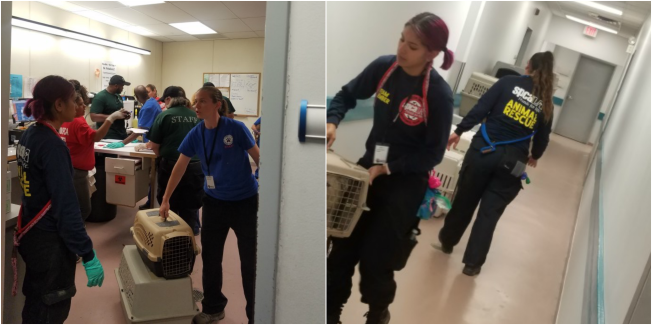
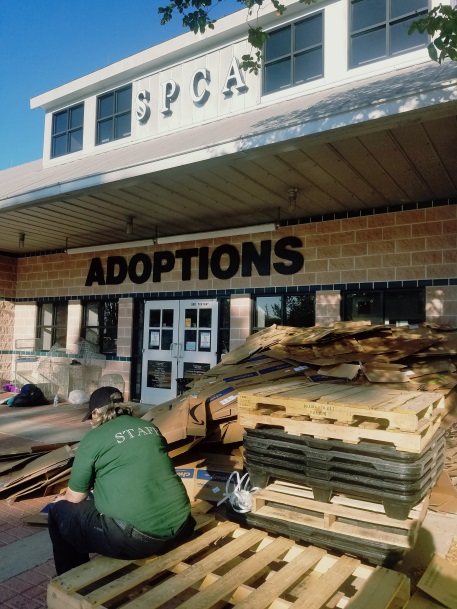
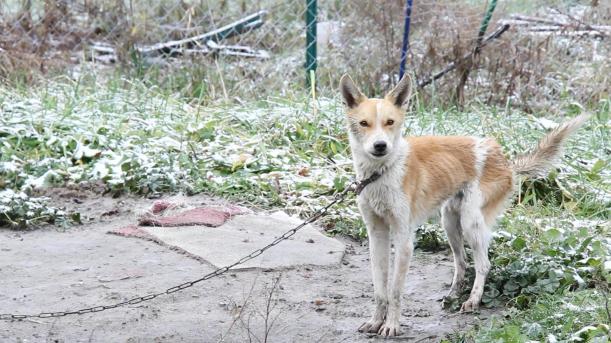
 Many animals entering MHS each year have never been socialized and display inherent aggression. We, as professionals in animal welfare, have to consider our obligation to public safety and the integrity of our placement process. Each animal we evaluate is an individual and a product of its owner and its environment. Genetics play a part in an animal’s behavior, but overwhelmingly the animals we see that display aggression are a product of the factors around them.
Many animals entering MHS each year have never been socialized and display inherent aggression. We, as professionals in animal welfare, have to consider our obligation to public safety and the integrity of our placement process. Each animal we evaluate is an individual and a product of its owner and its environment. Genetics play a part in an animal’s behavior, but overwhelmingly the animals we see that display aggression are a product of the factors around them.

